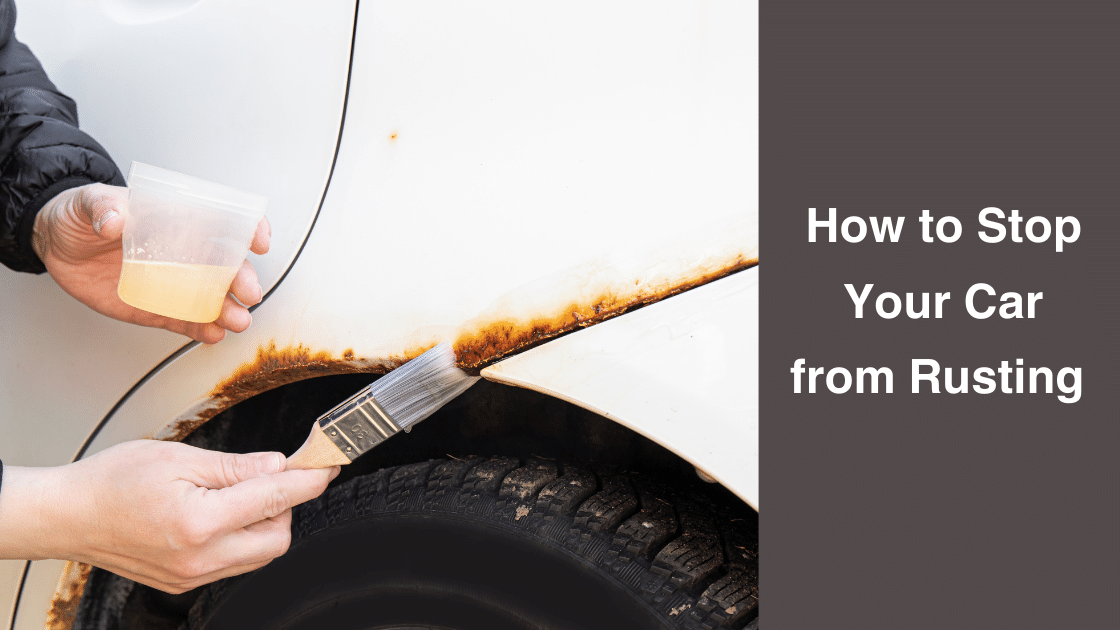Owning a car is a significant investment, and ensuring its longevity requires more than regular maintenance. Rust can be a real headache for car owners and can affect the beauty and integrity of the car. It is important to understand how knowledge rusts and which areas are affected. By knowing the early signs of rust and preventive measures, you can prevent the spread of rust and protect your vehicle for many years. Let’s move on to the last tips on how to prevent rust in your car.

Key Highlights
- Rust is a common problem for car owners, but it can be prevented.
- Rust is caused by a chemical reaction between iron, oxygen, and water or moisture.
- Rust can cause both cosmetic and structural damage to your car.
- Regular maintenance, such as washing and waxing your car, can help prevent rust.
- Addressing rust and taking preventative measures can save you time and in the long run.
Understanding Rust and Its Impact on Cars
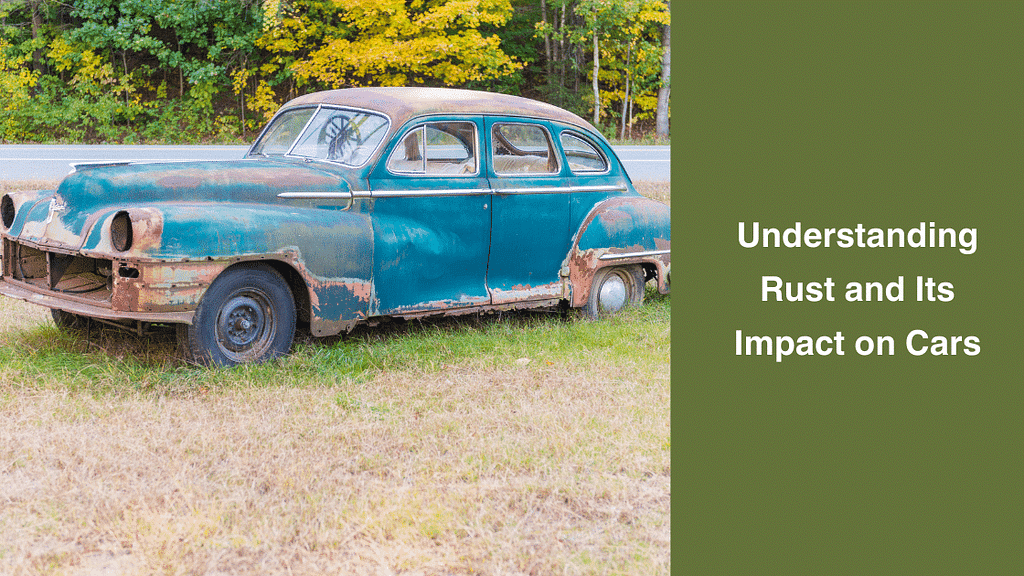
Rust can be the final enemy of your car’s body and threaten its integrity. Corrosion occurs when iron oxide chemically reacts with moisture and oxygen, leading to expensive operations. It usually focuses on areas such as landing gear, wheel wells and around windows. Understanding the science behind rust formation allows you to take the necessary precautions to prevent rust and keep your vehicle in top shape for longer.
The Science Behind Rust Formation
Understanding the science behind rust is crucial to preventing corrosion in your vehicle. When iron, moisture and oxygen interact, chemical reactions occur that lead to the formation of iron oxide, commonly known as rust. Road salt, bird droppings and salt water can promote oxidation of the car body and accelerate the process. By knowing these techniques, you can take steps to prevent rust from affecting the integrity of your vehicle. Carry out regular maintenance, protect coatings and clean thoroughly to prevent the effects of corrosion.
Common Areas Prone to Rust on a Car
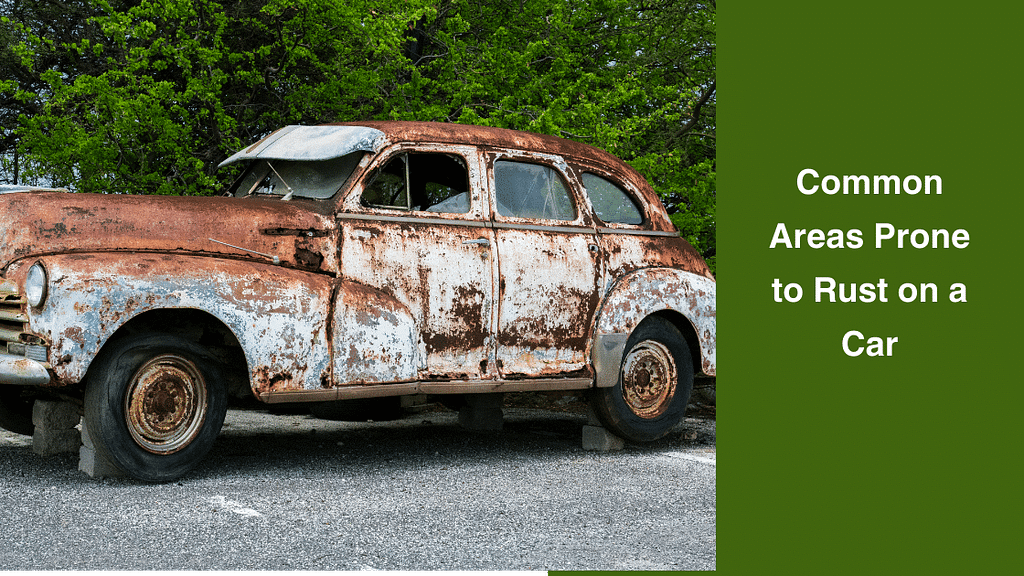
Carefully inspect areas of your car that are at risk for rust, such as under the hood, wheel wells, around the hood and door openings. Areas where moisture and road salt accumulate are at higher risk for corrosion. Don’t forget to check your car’s paint for any chips, dents or scratches that could cause the metal to rust. Clean your vehicle regularly and pay attention to these areas to prevent rust and keep your vehicle honest.
Early Signs of Rust to Watch Out For
Inspect your vehicle regularly for signs of early rust. Check your car’s paint for bubbling or discoloration, especially where there may be chips or scratches. Pay attention to areas where moisture can accumulate, such as under the car or around the wheel wells. If you find any imperfections, use a wire brush or sandpaper to remove rust and consider applying a protective coating to prevent further rust.
Read More How to remove Paint from Car
Identifying Surface Rust
Visually inspect areas like wheel wells, door rims, and undercarriage to check for rust on your car. Look for roughness or lumps in the paint, bubbling, or signs of paint rust. Check for paint damage that would expose the metal underneath. Using a light and magnifying glass can help you spot early signs of corrosion. Washing your car regularly and treating rust quickly can prevent further damage.
Recognizing the Signs of Penetrating Rust
Inspect your vehicle for signs of rust penetration, such as blistering or peeling paint that reveals the rust underneath. Look for areas of rust that may indicate a deeper corrosion problem beyond the surface. Pay close attention to areas where the metal is weak or pitted; because this is indicative of serious corrosion that could compromise the integrity of the vehicle. Remove rust as soon as possible to prevent further damage and maintain the condition of your vehicle. Regular maintenance and timely rust treatment are the key to combating this destructive process.
Preventative Measures to Protect Your Car

To protect your vehicle, start by regularly removing road salt and dirt that can cause rust. Humidity is your enemy, so make sure your car stays dry. Use a protective coating such as wax or ceramic coating to create an anti-rust system. Keeping the underside clean is important for longevity. Car washing not only keeps your vehicle looking beautiful, but also plays an important role in preventing rust. Since it is moisture resistant and well coated, your car will be well protected.
Keeping Your Car Clean and Moisture-Free
To protect your car from rust, make it a priority to properly clean and maintain it. Wash your car with road salt or wet water to remove dirt immediately after driving. Pay attention to the bottom and hidden corners where dirt can collect. Use a sealant or wax to create a moisture barrier. Keeping your car’s body clean and dry will help prevent rust and maintain its structural integrity in the long run.
The Importance of Regular Waxing
Regular polishing is an important step in preventing rust on your car. By using wax regularly, you create a protective layer that protects your car’s paint from moisture and bacteria. This barrier helps maintain the integrity of the car’s body and prevents rust. Wax also provides an extra layer of protection against environmental factors such as road salt and bird droppings. Don’t forget to add polishing to your maintenance schedule to keep your car looking good and rust-free.
Using Protective Coatings for Extra Safety
It is important to use a protective layer to prevent rust. Choose a durable finish that resists moisture and stains. Find products specifically designed to protect your body from harmful substances. Consider a ceramic coating for long-term protection, especially in winter or in areas exposed to salt water. Investing in the right paint is a smart way to ensure the longevity and integrity of your vehicle. Using this technique regularly can reduce the risk of rust and keep your car in good condition.
DIY Rust Treatment Methods
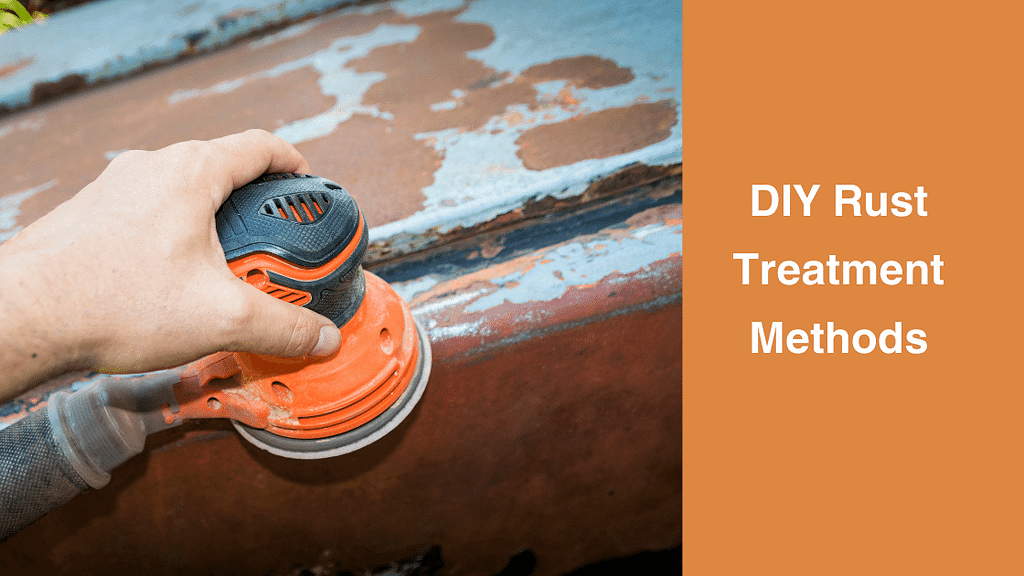
Dealing with car rust can be a DIY project. Start by removing small stones with a small abrasive such as sandpaper or a wire brush. Clean the affected area thoroughly and consider using toothpaste to stop the corrosion process. For a more durable solution, consider using a sealant or polish to provide an additional layer of protection against moisture and bacteria. Regular maintenance and timely intervention can help protect your car body and save on maintenance costs.
How to Deal with Minor Rust Spots
To get rid of small rust spots on your car, start by lightly scrubbing the affected area with fine sandpaper. Once smooth, clean the surface thoroughly to remove any dirt or debris. Use rust remover to stop the corrosion process. Once dry, add a protective layer to prevent future rust. Inspect and maintain your vehicle regularly to catch early signs of rust before it progresses. With these steps you can fix minor problems and keep your car looking original and honest.
When to Use Rust Converters
When dealing with minor rust that requires immediate attention and is not extensive enough to require professional attention, using a rust remover is a viable option. These products provide a temporary solution that inhibits the rust process by converting rust into stable compounds. It is recommended to use a rust remover after removing the rust using appropriate tools such as sandpaper or a wire brush. This method is good for combating rust in the early stages before it develops further. Always follow product instructions for best results.
Professional Rust Prevention and Treatment Options
Rust is a problem that many vehicle owners have to deal with. Not only will this make your car look ugly, but it can also cause serious damage to the body. If you want your car to receive the best rust protection and maintenance, it is best to seek help from an auto repair shop.
The body shop has the expertise and tools to protect your vehicle from rust and provide lasting protection. They can be rust resistant to prevent rust from accumulating by creating a barrier between the metal and moisture. These processes often use special coatings and sealants designed to withstand harsh weather conditions and provide long-term corrosion protection.
Another option available from body shops is primer. The primer should apply a protective layer to the underside of your car, which is particularly susceptible to rust due to exposure to road debris, salt, and moisture. The primer provides an extra layer of rust protection to your vehicle’s chassis.
It is important to choose a reputable and knowledgeable body shop to prevent and repair rust. Find a shop that specializes in rust prevention and has a track record of providing excellent service. Don’t be afraid to ask for advice or read online reviews to make sure you choose a professional you can trust.
Choosing the Right Rust Proofing Service
Protecting your car from rust is a great idea to prevent rust and extend the life of your car. When choosing rust prevention services, it is important to consider several important factors.
First, make sure to choose a professional auto body shop that specializes in rustproofing. Look for shops that have experience in treating and preventing rust and have a good reputation in the industry.
Next, consider the type of rust protection the service offers. There are many methods you can choose, including using an anti-rust coating or coating and applying a primer to the underside of your car. Discuss options with the physical store and choose the method that suits your needs and budget.
It’s also important to consider the warranty offered by the rustproofing service. A reputable service will provide a warranty that covers the treated areas for a certain period of time. This will give you peace of mind knowing that you are protected in case rust does occur.
Finally, consider the cost of rust prevention services. Although it is important to choose a service that fits your budget, pay attention to services that are cheaper than others. Proper rust prevention requires the use of specialized products and expertise; Therefore, be ready to invest in a reputable service to get the best results.
Overall, choosing the right rustproofing service is essential to effectively prevent rust and protect your car. Do your research, compare options, and choose a reputable and experienced professional auto body shop for the best results.
The Role of Undercoating in Rust Prevention
The primer plays an important role in preventing rust by providing an additional layer of protection to the underside of your vehicle. The underbody of the vehicle is particularly prone to rust due to exposure to road debris, salt and moisture.
Undercoating involves applying a protective layer to the underside of your car, creating a barrier between metal and objects. This barrier prevents moisture and corrosive substances from coming into direct contact with the metal, reducing the risk of rust.
Additionally, undercoating helps to dampen road noise and reduce vibrations, improving the overall driving experience. It also provides some insulation, helping to keep the interior of your car cooler in summer and warmer in winter.
When considering undercoating, it’s important to choose a professional auto body shop that specializes in rust prevention and has experience in undercoating. They will be able to apply the undercoating properly and ensure that it provides effective protection for your car.
Regular inspection and maintenance of your undercoat is also important to ensure its effectiveness. Watch for signs of damage or wear and consult a professional as soon as possible. With these measures, you can protect your vehicle’s underbody from rust and extend its life.
Seasonal Care Tips to Prevent Rust
It is important to have regular maintenance and care for your car to protect it from rust. Road salt is often used to melt ice and snow during the winter months, but it can cause rust. To prepare your car for winter, wash the underside regularly and consider using rust-inhibiting products. Falling birds and salt water during the summer months can also cause damage. Do regular chores like washing your car after going to the beach, cleaning up bird droppings, and rinsing it with salt water. Following these seasonal maintenance tips can help prevent rust and keep your car in top shape.
Preparing Your Car for Winter
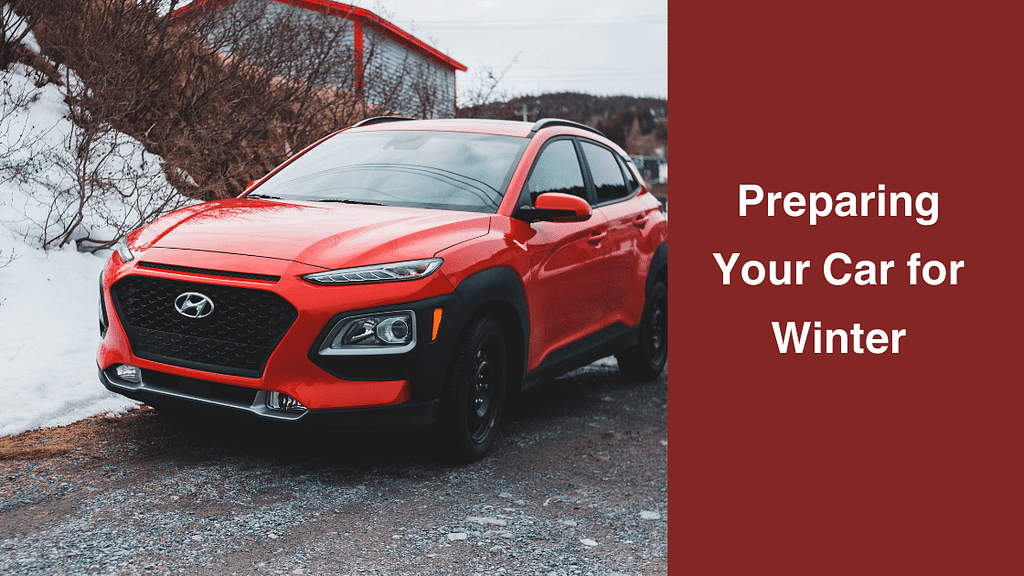
Winter months can be particularly harsh on your car’s exterior due to road salt and cold temperatures. To prepare your car for winter and prevent rust, consider the following tips:
- Wash your car regularly, paying special attention to the undercarriage to remove salt and road debris.
- Apply a rust inhibitor product to the undercarriage for added protection.
- Keep your car covered or park it in a garage to minimize exposure to harsh weather conditions.
- Check for any signs of rust or damage and address them promptly.
- Clean the interior of your car regularly to remove any moisture or salt residue that can contribute to rust formation.
By following these tips, you can protect your car from rust during the winter months and keep it looking its best.
Summer Maintenance to Prevent Rust
Summer brings its own challenges when it comes to preventing rust on your car. Bird droppings and salt water can cause damage if not addressed promptly. To prevent rust during the summer months, consider the following maintenance tips:
- Regularly wash your car to remove bird droppings, which can be acidic and corrosive.
- Rinse off your car after trips to the beach or exposure to salt water.
- Wax your car regularly to provide an additional layer of protection against rust.
- Check for any signs of rust or damage and address them promptly.
- Park your car in a shaded area or use a car cover to protect it from the sun’s UV rays.
By implementing these summer maintenance tips, you can minimize the risk of rust formation and keep your car in optimal condition.
Conclusion
Becoming a teacher in Texas requires understanding the state’s specific laws and qualifications. From getting your degree to graduating teachers, there are clear steps to follow. Additionally, passing necessary tests and meeting other requirements is also important for a good job. By learning and participating in professional development, teacher candidates can complete the process and make a positive impact on education in Texas.
Frequently Asked Questions
Can rust on a car be completely stopped?
While it’s not possible to prevent rust from forming on your car, regular maintenance and care can slow it down. This includes cleaning and waxing your car regularly, repairing scratches and dents quickly, and using a scratch protector or wax. These measures can help prevent rust from spreading and extend the life of your car.
How often should I inspect my car for signs of rust?
It’s recommended to inspect your car for signs of rust at least once every few months. Pay attention to the car’s body, especially areas prone to rust, such as the undercarriage, wheel arches, and door sills. Look for any discoloration, bubbles, or rough patches, as these can be early signs of rust formation.
Is it worth removing rust from an older car?
Removing rust from an older car can be worth it, especially if you plan to keep the car for a longer period of time. Rust can significantly lower the value of a car and compromise its structural integrity. Removing rust and addressing any underlying issues can help preserve the car’s value and extend its lifespan.

